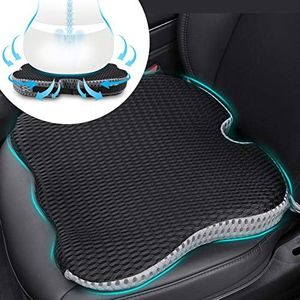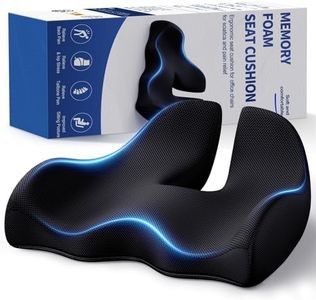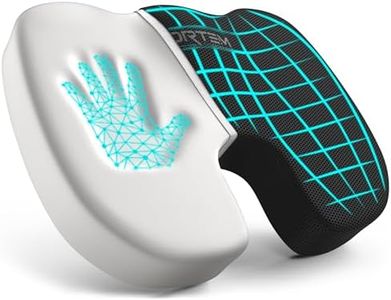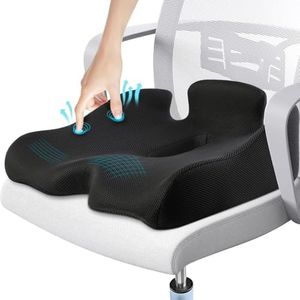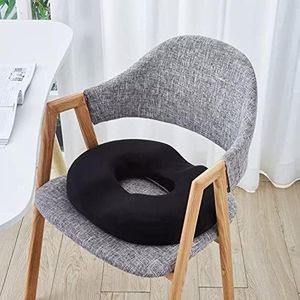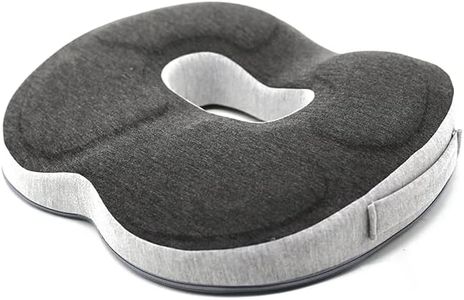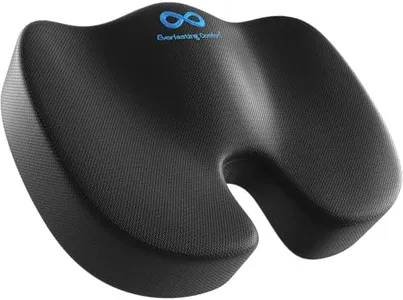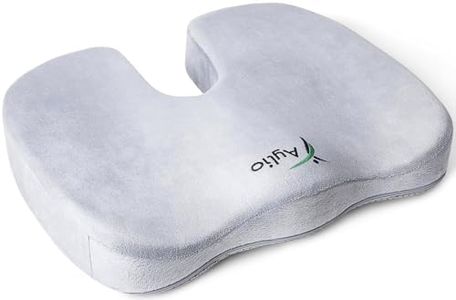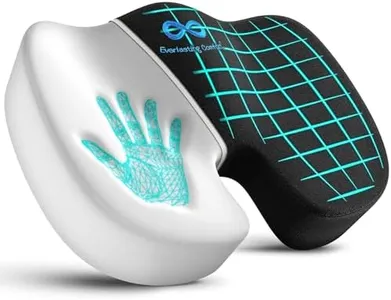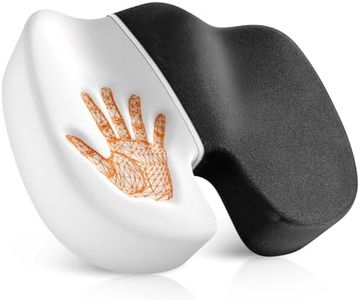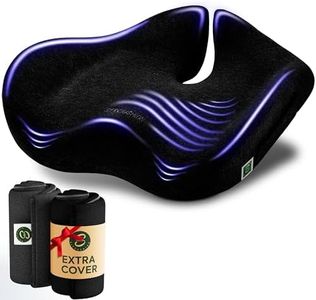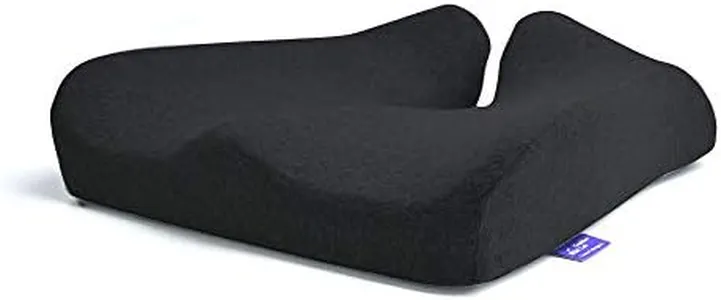We Use CookiesWe use cookies to enhance the security, performance,
functionality and for analytical and promotional activities. By continuing to browse this site you
are agreeing to our privacy policy
10 Best Coccyx Cushions
From leading brands and best sellers available on the web.Buying Guide for the Best Coccyx Cushions
Selecting the right coccyx cushion can significantly improve comfort and relieve pain while sitting, especially if you spend long hours at a desk or suffer from tailbone discomfort. To make a smart choice, it's important to consider both your personal needs and the cushion's key features. Thinking about how, where, and how often you'll use the cushion will help you identify the specs that matter most for you.MaterialThe material of a coccyx cushion determines its comfort, support, and durability. Common materials include memory foam, gel, or a combination of both. Memory foam offers good pressure relief and molds itself to your body, which is helpful if you need extra cushioning. Gel layers tend to provide better cooling, which is nice if you get warm easily while sitting. If you need softness and body-contouring, memory foam is great; if you want to stay cooler, look for gel or a hybrid. Consider what feels most comfortable for your body and whether you need the cushion to keep its shape after prolonged use.
Thickness and SizeThickness and size play an important role in how much support and elevation the cushion provides. Thicker cushions (three inches or more) offer stronger support and can relieve more pressure, but may lift you too high if your chair is already tall. Thinner cushions (under two inches) are less noticeable but may not offer as much relief for severe pain. The overall size should fit your chair and your body. Measure your seat before buying and think about whether you need extra space or if you want a travel-friendly, compact design.
Shape and DesignCoccyx cushions come in various shapes—most commonly, a U-shaped cutout at the back to reduce pressure on the tailbone. The design is key because it determines how well the cushion relieves discomfort from sitting. A U-shaped or wedge style can help with posture and tailbone relief, while some cushions feature a contour or dip for thighs. If you have significant coccyx pain or chronic discomfort, look for those with pronounced cutouts or ergonomic designs. For mild discomfort, a simpler shape may suffice.
Cover Material and CareThe cover material is important for comfort, hygiene, and ease of cleaning. Some covers are made with soft, breathable fabrics, while others are water-resistant or machine washable. Consider if you need a cover that manages sweat, allergies, or is easy to remove and clean. If you use the cushion daily or share it with others, a washable cover is a smart choice to keep things fresh.
Portability and WeightPortability refers to how easy the cushion is to carry, whether for commuting, office, or travel use. Lightweight cushions are ideal if you plan to bring the cushion to different locations. Some also include carrying handles for convenience. If you need the cushion primarily for home or office, weight and portability might be less important, but if you're always on the go, pick a compact and light model.
